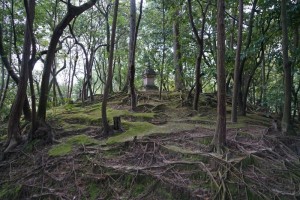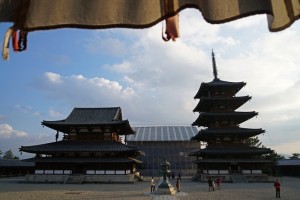January 1 -4, 2017: Kumano Sanzan, Shingu, Kumano, Ise, Nara & Osaka
New Year Day January 1, 2017 Sunday: Kumano Kodo – Kumano Hongu Taisha – Fudarakusan-ji – Shingu
I got up early to watch sunrise, went to the indoor onsen and strolled along the river to take photos. What a great start of 2017!
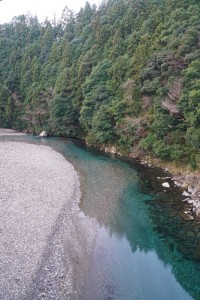 |
 |
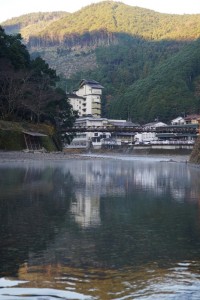 |
I took the 8am free shuttle to Hosshinmon-oji and began the hike around 8:30am. The trail is well-signed and paved. The first part of the hike took me through hamlets with fields under cultivation. There are also a few tea plantations. I was thrilled by the beautiful sun rays shining through canopies and seas of bamboos and pine trees. There are half a dozen of monuments along the route which provide good photo opportunities.
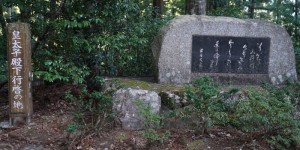 |
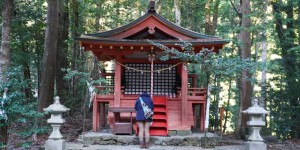 |
 |
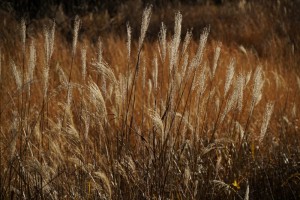 |
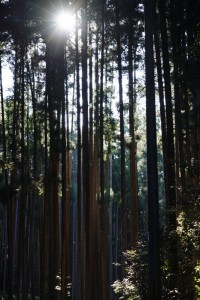 |
 |
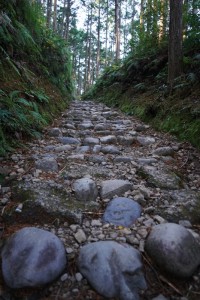 |
 |
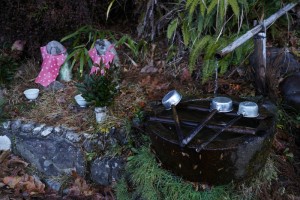 |
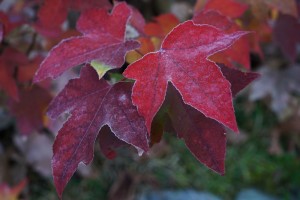 |
 |
 |
 |
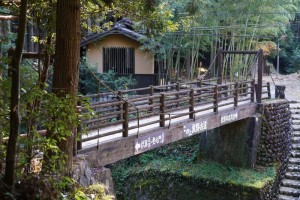 |
 |
I finally arrived at the Kumano Hongu Taisha with five shrines. I enjoyed the festive atmosphere with hundreds of Japanese lining up in front of the shrines to seek blessings.
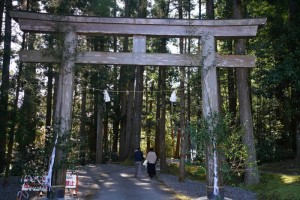 |
 |
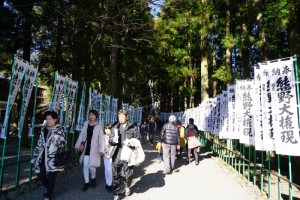 |
 |
I also visited the Oyunohara nearby. Up to 1889, Kumano Hongu Taisha was located on a sandbank at the confluence of the Kumano River and its tributaries of the Otonashi River and the Iwata River.
 |
 |
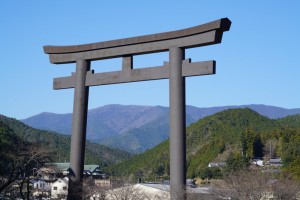 |
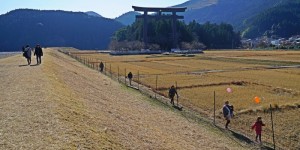 |
As the bus to Shingu would not be leaving till 2:10pm, I had time to visit the museum on this particular world heritage site and had a snack. I have visited all but one property of this World Heritage Site- the Fudarakusan-ji which I missed two days ago. As the bus to Nachi Station had gone, I took the train without realising that it would not stop in Nachi. As a result, I arrived at Kiikatsuura and had to wait for the 4:30pm bus heading to Shingu. I took the opportunity to have my third meal in this town and ordered a sashimi set again. But this time it’s more expensive ¥1,500 but not as good! Finally I arrived at the temple just in time before its closure. I also saw the boat with which the priests were supposed to have set sail.
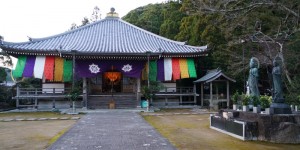 |
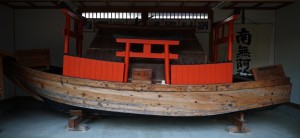 |
I took the 5:08pm bus to Shingu and spent a night at the Shingu Hase Ryokan (¥5,400 for a single room with facilities). As it was New Year Day, I decided to find somewhere good for dinner. Unfortunately most if not all restaurants were closed. Two places with grilled meat were open. But I do not like grilled or fried food. I walked for some 20 minutes before finding a restaurant in a hotel on the main street. I ended up having a sumptuous set dinner with sashimi, tempura, a hot pot with salmon, chicken and pork, rice and soup for only ¥1,600. I had a beer and paid altogether ¥2,150 for an excellent New Year feast!
January 2 Monday: Kumano – Ise
I had a long day when I took the 6:20am train to Kumano. I arrived at my destination at 6:40am when everything was closed. There is no luggage locker outside the station. As a result, I had to walk with my suitcase.
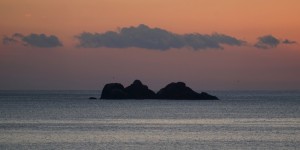 |
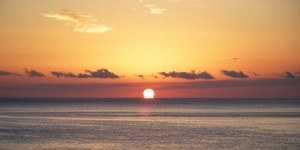 |
This small town is known for several attractions including the Shishiiwa (a rock resembling a lion), Hanano Iwaya Caves (a rock mass resembling a lady with a baby and said to be the oldest shrine in Japan) and Onigajo (spectacular rocky formation along the coast formed by weathering).
 |
 |
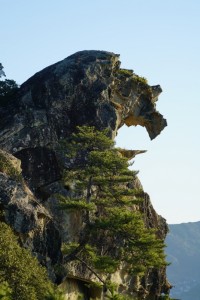 |
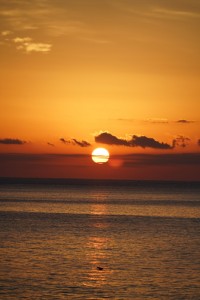 |
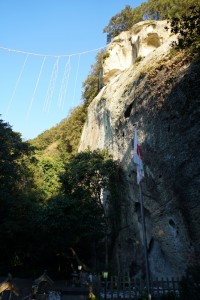 |
When I was walking along the beach towards Shishiiwa, a 68-year-old lady, Toyoko on a morning walk greeted me and offered to accompany me. With her help, I managed to leave my suitcase in a fast food shop close to Shishiiwa. We had a lovely time though we could not talk to each other.
After the Hanano Iwaya Caves, I asked her to call me a taxi to Onigajo. Instead, she called her husband and asked him to drive us there. I was moved and most delighted to meet her husband. They are a lovely couple.
 |
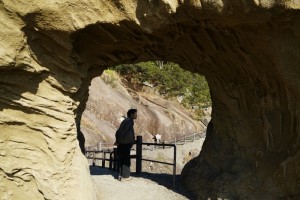 |
 |
 |
 |
 |
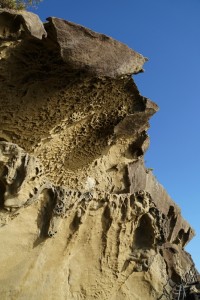 |
 Afterward, they dropped me off in the train station and I took the 9:33am train. I arrived in Taki at 11:18am and took a local train to Ise (伊勢市). I finally arrived in Ise which was packed with Japanese going to the Ise Grand Shrine. I only found a room in the Guesthouse Kazami close to the station two days before arrival. The place run by an interesting Japanese man looks more like a hostel: there is no private toilet and shower. Anyway, I took a room with shared facilities for ¥6,000. Not value-for-money at all!.
Afterward, they dropped me off in the train station and I took the 9:33am train. I arrived in Taki at 11:18am and took a local train to Ise (伊勢市). I finally arrived in Ise which was packed with Japanese going to the Ise Grand Shrine. I only found a room in the Guesthouse Kazami close to the station two days before arrival. The place run by an interesting Japanese man looks more like a hostel: there is no private toilet and shower. Anyway, I took a room with shared facilities for ¥6,000. Not value-for-money at all!.
 Ise is famous for its Grand Shrine 伊勢神宮which is the most sacred Shinto shrine in Japan. The city has an additional 123 shrines and the surrounding areas. Hence, it is also known as the “ The Holy City”. The entire Shrine is completely rebuilt from scratch every 20 years using cypress wood from Ise using joined wood instead of nails. This tradition has begun over 1,240 years as the Shrine is in its 62nd reconstruction. The next reconstruction will be in 2033.
Ise is famous for its Grand Shrine 伊勢神宮which is the most sacred Shinto shrine in Japan. The city has an additional 123 shrines and the surrounding areas. Hence, it is also known as the “ The Holy City”. The entire Shrine is completely rebuilt from scratch every 20 years using cypress wood from Ise using joined wood instead of nails. This tradition has begun over 1,240 years as the Shrine is in its 62nd reconstruction. The next reconstruction will be in 2033.
Ise Grand Shrine is a complex comprising a large number of shrines centred on the Outer Shrine and Inner Shrine which are six kilometres apart. Purportedly to be the home of the Sacred Mirror, both sites are not accessible to the general public: visitors are not allowed beyond sights of the thatched roofs of the central structures, hidden behind four tall wooden fences. During the Edo period, it is estimated one out of ten Japanese conducted an Okage Mai-Ri pilgrimage to the shrine: they would visit the Outer Shrine before the Inner Shrine. The chief priest or priestess of Ise Shrine responsible for watching over the Shrine, must come from the Imperial House of Japan. Japanese traditionally visit a shrine on New Year’s Day.
I followed the pilgrims’ tradition and first visited the Outer Shrine 外宮 dedicated to Toyouke-Omikami, the goddess of food, clothing and shelter (life’s basic needs). The shrine was crowded but orderly and not too noisy. I also spent some time in the museum which provides superb explanations on how the shrine is reconstructed every 20 years and the building techniques. As the illustrations are all in Japanese, I am afraid I have not got much out of the visit. What a pity!
 |
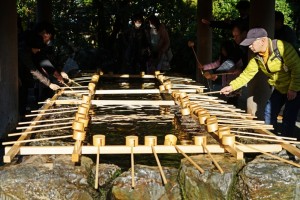 |
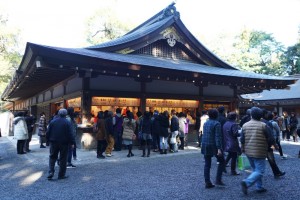 |
 |
 |
 |
 |
The Inner Shrine 内宮dedicated to the sun goddess Amaterasu (sometimes called the “supreme kami”), has a magical setting surrounded by hills on two sides with a river throwing through. There is also an enormous ruin right next to the present main shrine. There were thousands of visitors thronging through the massive site. I am most impressed by the Japanese who are obedient and respectful. They always line up patiently, make no noise and bow respectfully in front of the shrine. As no one talked loudly or shouted, the sacred place remained tranquil, serene and atmospheric .
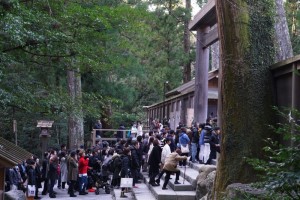 |
 |
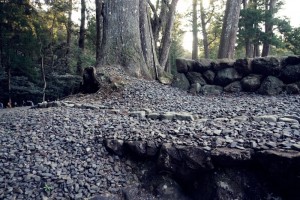 |
 |
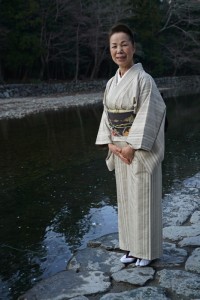 |
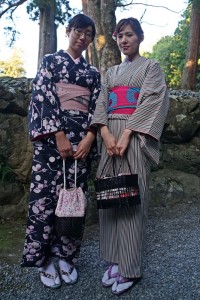 |
 |
 |
 |
After the shrine, I used my pass to get on a bus heading to Toba (鳥羽) located at the northeastern end of the Shima-hanto Peninsula in Mie Prefecture and famous for oysters and for cultured pearls. It was dark when I arrived around 5:15pm. I was hungry and had dinner in Restaurant Sazanami recommend by a lady in the tourist office. It must be a popular local eatery: all the tables were full. I ordered a fish bone dish cooked with soya sauce. But I found the sauce too sweet. I also ordered a dish with three types of shell fish (a scallop, two clams and one more type of shell fish). The total bill was only ¥2,700. Great value! I took the 6:30 pm train and arrived in Ise before 7pm. I was tired and went to bed before 9pm.
January 3 Tuesday: Ise – Nara – Osaka
The train pass would expire before 11pm in the evening. On my way to Osaka, I planned to visit three more temples with World Heritage status in Nara namely Yakushi-ji 藥師寺, Toshodai-ji 唐招提寺and Horu-ji 法隆寺. On the advice of a lady from the tourist office in the Ise train station, I took the 6:28 am direct train to Kameyama where I had to wait 45 minutes for a connecting train to Kamo. Then I had to wait for another 16 minutes for a train to Nara.
By the time I reached Nara, it was almost 11am. The train journey takes me through some rural areas but the scenery is not spectacular. Anyway, I spent only 160 minutes on the train and 110 minutes waiting for a train. On reflection, I should not have stayed in Ise: I could have taken the train to Nara after visiting Ise. As I know Nara well, I should have no problem in finding a hotel next to the train station even if I arrive after midnight.
Japan is traveller-friendly with lockers in or near the train station. As I had to leave my suitcase in the Tourist Office next to the train station (¥500 for a day), I missed Bus No 70 and had to wait 30 minutes for the next one. By the time I reached the Yakushi-ji, it was about 11am. First, I stepped into the Genjo-sansoin Garan a complex built north of the main temple complex in 1981 and dedicated to the Chinese monk Genjo-sanzo who was famous for his extensive travels to India and Central Asia. Yakushi-ji is the headquarters of the Hosso Sect of Japanese Buddhism upon which Genjo-sanzo’s teachings had a profound influence. I had to pay ¥800 to enter the octagonal hall where the revered monk’s remains are enshrined.
 |
 |
Originally founded in 680, the temple prospered under the patronage of the imperial court in the 8th century. Since then, the temple had lost all its buildings to fire with the exception of its east pagoda (completed in 730). In the Golden Hall, there are three impressive wooden statues: a seated Yakushi planked by the standing Sun and Moon Bodhisattva.Restoration work has continued since 1967.
 |
 |
 |
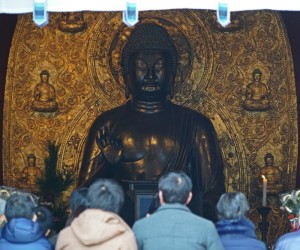 |
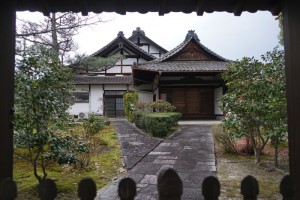 |
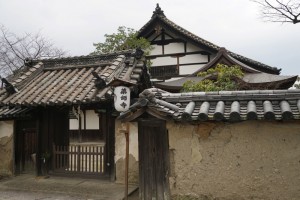 |
It was raining when I walked from Yakushi-ji to Toshodai-ji next door (entrance fee ¥600). The air was fresh and chilly. This area which was part of old Nara, is atmospheric. This temple established in 759 by the Chinese monk Ganjin who arrived in Japan in 754, is the headquarters of the Ritsu Sect. I visited the two largest halls of the 8th century. The Golden Hall with three statues of a seated Rushana Buddha, a standing Yakushi Tathagata and Thousand Armed Avalokiteshwara is the greatest Tempyo Era structure remaining in Japan today. Behind it is the Lecture Hall which was originally an administrative building located in the Nara Imperial Palace and later moved to this temple. Today, it is the only surviving building of the former palace.
 |
 |
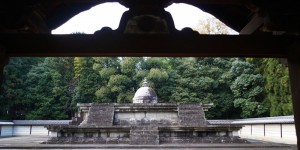 |
 |
There were few visitors in the temple. I like its serene, tranquil and peaceful atmosphere. I followed one of the paths which leads me to Ganjin’s shrine and his grave.
 |
 |
 |
 |
 |
 At 2:15pm, I boarded the bus heading back to the Nara train station. I took the train again and got off at the Horu-ji station. I had to walk 15 minutes to reach the temple. As it was late, most visitors had gone. Luckily it stayed open half an hour longer during New Year holiday thus giving me more time to appreciate this expansive temple. This temple is the headquarters of the ‘Shotoku” sect and charges an entrance fee of ¥1,500. The large complex serving as a seminary and monastery is made up of two areas: the Sai-in 西院and the To-in 東院 which is 122 metres east of the in the Sai-in.
At 2:15pm, I boarded the bus heading back to the Nara train station. I took the train again and got off at the Horu-ji station. I had to walk 15 minutes to reach the temple. As it was late, most visitors had gone. Luckily it stayed open half an hour longer during New Year holiday thus giving me more time to appreciate this expansive temple. This temple is the headquarters of the ‘Shotoku” sect and charges an entrance fee of ¥1,500. The large complex serving as a seminary and monastery is made up of two areas: the Sai-in 西院and the To-in 東院 which is 122 metres east of the in the Sai-in.
The Sai-in contains the Golden Hall and a five-story pagoda, both are among the world’s oldest wooden buildings. The 2-story hall measuring 18.5m by 15.2m, holds the famous Shaka Triad together with a bronze Yakushi and Amida Nyorai statues.
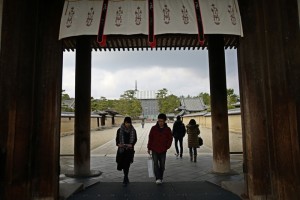 |
 |
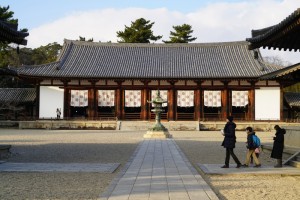 |
 |
 |
 |
The To-in holds the octagonal Yumedono Hall and a treasure hall containing numerous national treasures including the exquisite 6th-century Kudara Kannon, a 210cm-high gilded camphor wood statue made by a Baekje craftsman (it was a kingdom located in southwest Korea) and then sent to Japan as a present.
 |
 |
 |
 |
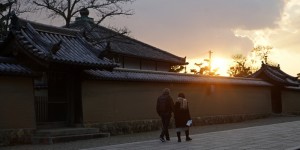 I was among the last visitors to leave just before 5pm. I watched a beautiful sunset from the temple. After a short train ride, I arrived in Osaka and checked in the Osaka Hotel Monterey close to the train station. I got a fantastic last minute deal and only paid ¥6,750 for a beautiful room in this four-star hotel. For a change, I strolled in the malls before having dinner in an Italian restaurant nearby. I had clams and mussels and a glass of white wine for ¥1750. I had a full and most wonderful day visiting three very important Buddhist World Heritage temples in Japan, having a delicious dinner and spending my last night in Japan on this trip in a most comfortable room.
I was among the last visitors to leave just before 5pm. I watched a beautiful sunset from the temple. After a short train ride, I arrived in Osaka and checked in the Osaka Hotel Monterey close to the train station. I got a fantastic last minute deal and only paid ¥6,750 for a beautiful room in this four-star hotel. For a change, I strolled in the malls before having dinner in an Italian restaurant nearby. I had clams and mussels and a glass of white wine for ¥1750. I had a full and most wonderful day visiting three very important Buddhist World Heritage temples in Japan, having a delicious dinner and spending my last night in Japan on this trip in a most comfortable room.
January 4 Wednesday: Osaka – Hong Kong
I was lazy and did not go out to explore Osaka before taking a train to the airport at 10:30am. My plane was delayed for almost an hour and did not take off till 3pm. Anyway, I arrived at my sweet home shortly after 8pm.
Remarks
I have been to Osaka, Kyoto and Nara several times. I made this trip primarily to see Tian’s new opera in Kyoto. This last-minute short trip has exceeded my expectations.
- The new opera on Ganjin is excellent and Tian’s performance is superb. I hope this opera can go on a world tour one day. It was fabulous to meet up with Tian, Martha and our Japanese friends from London who have also come for Tian’s performance. We all had a great time.
- Nara is a living museum of Tang Dynasty architecture. I am thrilled to visit nine temples with world heritage status including the world’s largest wooden hall and gilded seated Buddha in Todai-ji. My favourite is Toshodai-ji which was founded by Ganjin. I love wooden structures and statues and admire how the Japanese have done a remarkable job in preserving their national treasures.
- It is a tradition for the Japanese to visit a shinto shrine in the New Year. I visited the Kumano Hongu Taisha and Ise Grand Shrine on the first and second day of the New Year and found the atmosphere captivating and terrific. I watched how the respectful Japanese queue up orderly in front of the shrine, get a drink and buy souvenirs. What a wonderful cultural experience!
- Adorable people have made my short trip memorable. Three strangers had offered me a ride: a Korean in Kyoto, a young Japanese lady in Kiikatsuura and the guesthouse owner in Shingu. I had dinner with Yoko, my hard-working and sweet host in Nara, who gave me a hot-water bottle that was still hot after 10 hours. Toyoko and her husband are amazing: they drove me to see Onigajo before I left for Ise. I am indebted to Miyo who reserved a room for me in Kawagu Onsen. Without her help, I would not have found a place to stay in Kumano Kodo on New Year Eve!
- Travel by train in Japan is economical and enjoyable. This time, my 5-day train pass has taken me to Kumano Sanzan, Kiikatsuura, Shingu, Kumano, Ise and Nara before I ended my journey in Osaka.
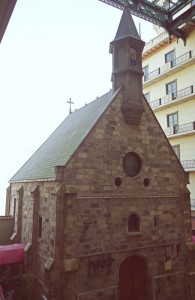 |
 |
 |


